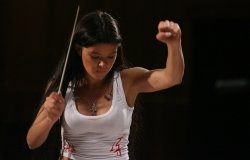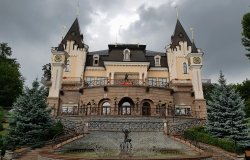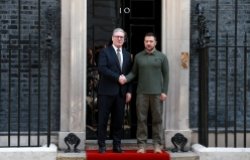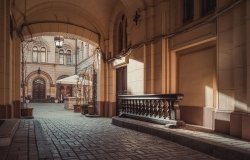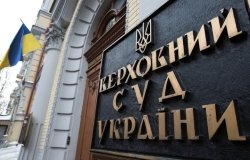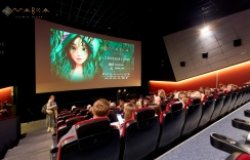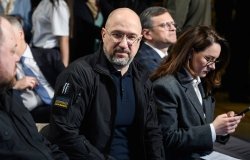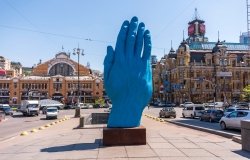
A blog of the Kennan Institute
Yermilov Centre Draws on the Visual Arts to Give Meaning to the Inhabitants of Front-Line Cities
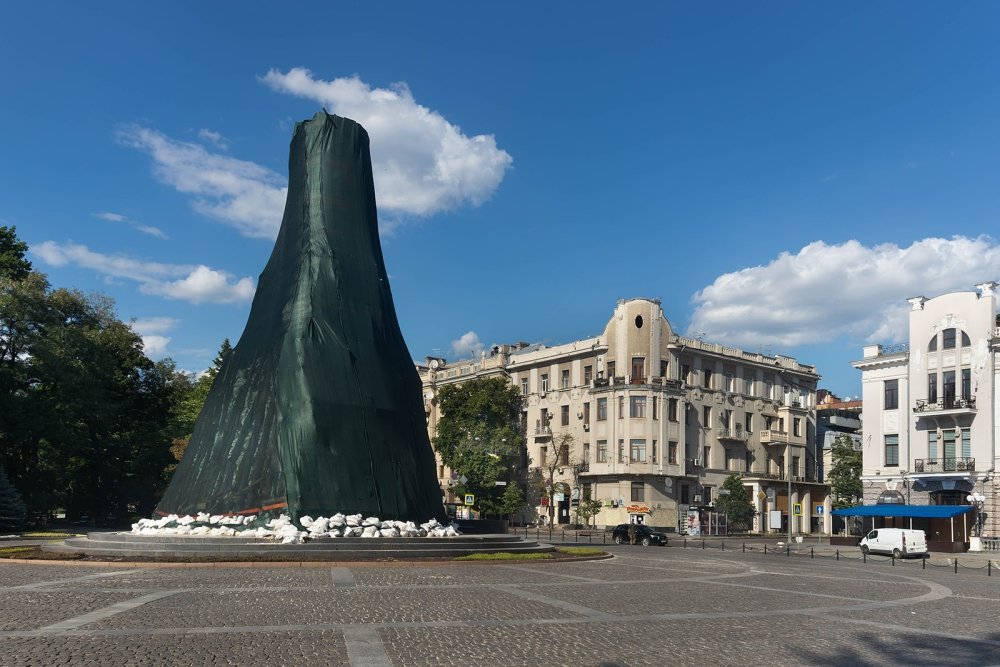
The Russian invasion of Ukraine has been directed at the destruction of a culture as well as a grab for territory. Russian forces have attacked Ukraine’s cultural institutions relentlessly, trying to destroy churches, schools, libraries, cultural centers, theaters, and museums. In response, the Ukrainian cultural community has mobilized to protect what existed prior to the war and to create new works testifying to the horrors that have occurred since.
Visual artists throughout the country have drawn on their wartime experiences to expand the reach of their art. Their works are finding their way into exhibitions taking place in Kyiv and in the relatively safe cities of western Ukraine. They also are appearing in front-line cities damaged by war. Kharkiv’s Yermilov Centre has emerged as a leader in bringing the works of contemporary artists to those who have been living through the fighting.
The center opened in 2012 and was named to honor the Ukrainian avant-garde painter and designer Vasyl Yermylov. Yermylov participated in the cubist, constructivist, and neo-primitivist movements of the early 20th century. Following a sojourn in Moscow—where he encountered Vladimir Mayakovsky, David Burliuk, and Pyotr Konchalovsky—Yermylov returned to his native Kharkiv and established the city’s technical art institute. He participated in the expansion of avant-garde design throughout the 1920s and was artistic director for the magazine Avantgarde. He continued to design even as official policies became more conservative during the 1930s, and he became a teacher at Kharkiv’s National Art Institute following the war, teaching until shortly before his death in January 1968, at the age of 72.
The center’s first exhibition, “Construction. From Constructivism to Contemporary Kharkiv 20th–21st Centuries” explicitly brought together the works of leading avant-gardists from the 20th century with those of artists working in post-independence Kharkiv. A 2013 exhibit showcased the pictures of internationally renowned Kharkiv photographer Boris Mikhailov. Subsequent shows explored the work of Kharkiv artists from a variety of international perspectives.
The current war has hastened the center’s ambitious exhibition program. For center director Natalia Ivanova, art has an especially energizing role to play in war-torn cities such as Kharkiv. Local residents live with the detritus of attacks and with sirens and other sounds of war. Art strengthens their resolve to survive and rebuild, especially when artists themselves are living through combat. This perspective prompted Ivanova to join forces with her staff and exhibition designer Kostiantyn Zorkin to mount a show entitled “Personnel” this past spring. The show brought together the works of 17 Kharkiv artists who drew on their own experiences to recalibrate their artistic vocabulary.
The center followed this summer with a second exhibition, exploring mythmaking at a time of war. Working in cooperation with Serhii Melnychenko’s MYPH School of Conceptual and Art Photography, the “New MYPHologies” exhibit showcased the work of photographers, videographers, and other artists bringing mythology, “the ancient form of perception and understanding of the world,” together with their own “sensual, emotional understanding of reality and its figurative expression.” The work of each artist creates “new legends and myths” which form the core of a contemporary mythology shaped by the current war. More exhibits drawing on the impact of war will follow.
Ivanova opened this exhibition by commenting that “today, there is no need to prove to anyone the importance of cultural institutions during the war. And communication between art institutions is a requirement of the times… This is how new ideas emerge and new opportunities for future projects are created.” Moreover, she continued, “the audience today is thirsty for senses, so we have to broadcast them in the language of contemporary art.”
In today’s Ukraine, the arts give voice to the personal worlds of artists and their audiences shaped by trauma, creating new legends and myths and crafting modern heroes. These artistic stories, in turn, give strength and meaning to Ukrainians as they wait to see what art they might produce once the fighting has stopped.
The opinions expressed in this article are those solely of the author and do not reflect the views of the Kennan Institute.
See our newest content first.
Subscribe to receive the latest analysis from Focus Ukraine.
About the Author

Blair A. Ruble
Former Wilson Center Vice President for Programs (2014-2017); Director of the Comparative Urban Studies Program/Urban Sustainability Laboratory (1992-2017); Director of the Kennan Institute for Advanced Russian Studies (1989-2012) and Director of the Program on Global Sustainability and Resilience (2012-2014)

Kennan Institute
The Kennan Institute is the premier US center for advanced research on Eurasia and the oldest and largest regional program at the Woodrow Wilson International Center for Scholars. The Kennan Institute is committed to improving American understanding of Russia, Ukraine, Central Asia, the South Caucasus, and the surrounding region though research and exchange. Read more


